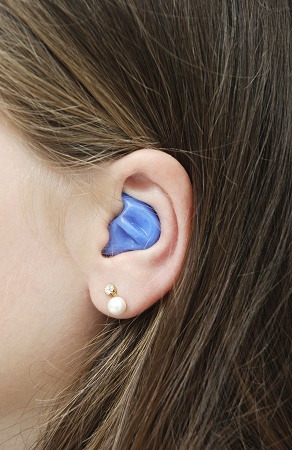
If hearing loss is the invisible disability, then sound is the invisible hazard. Without even being aware of it, the sounds we subject ourselves to might be creating permanent hearing loss that accumulates irreversibly year after year.
Who’s at risk for hearing loss?
A normal conversation registers at a volume of roughly 60 decibels. City traffic registers at approximately 80, a rock concert at 100, a sporting event at 105, a power saw at 110, and a shotgun blast at a deafening 145.
Here’s the problem: repeated subjection to any sound above 85 decibels can result in permanent hearing loss. That’s why hearing protection is especially critical for musicians, concert-goers, hunters, and construction workers.
But it’s not as straightforward as just staying clear of the sound. Most of us are unwilling to resign our careers or forgo attending concerts just to assure that we can hear better when we grow old. The only solution is a compromise: safeguarding our hearing by limiting the volume of the sounds we’re subjected to. Welcome to the world of earplugs.
Custom versus disposable earplugs
The objective of any earplug is obvious: lower the volume of sound. And though it’s true that any earplug can achieve this, it turns out that it’s not that simple, for two reasons:
- All sound is not created equal—The sounds of speech are much different than the sounds of background noise. You want to suppress more of the background noise than of speech or music.
- Sound is dynamic—specific frequencies require different handling, and volume shouldn’t be decreased by too much or by too little.
So, for an earplug to be effective, it has to 1) reduce the volume of sound, but not by too much or too little, and 2) handle various types of sounds, or frequencies, differently.
As you’ll discover, custom earplugs accomplish these two feats better than foam earplugs and have the advantage in three important categories: sound quality, comfort, and cost.
1. Sound Quality
Disposable foam earplugs shut out all sound and all frequencies, creating what is known as the occlusion effect for the user, which is the sense of a “hollow” or “booming” echo-like sound in their own voice. Foam earplugs therefore reduce overall sound quality and create a confined feeling.
Custom earplugs, in contrast, have special filters for an exact, even level of noise reduction (attenuation). The earplugs can be programmed to decrease volume only by the necessary amount, and can filter select types of sound more than others, conserving the fidelity of speech and music.
2. Comfort
Foam earplugs, to be effective at reducing volume, have to form a deep, tight seal within the ear canal, creating a constant feeling of pressure, and this “plugged up” perception is nearly universal.
Custom earplugs, conversely, are molded to the contours of each patient’s ears by a hearing professional, creating a secure, natural fit without the feeling of constant pressure. Custom earplugs are also manufactured with soft, medical-grade material that doesn’t shrink or change form.
In addition, foam earplugs are unable to adjust well to variations in ear size and shape. Since custom earplugs are specially molded for each patient, differences in ear size and shape create no problem at all.
3. Cost
Let’s carry out some quick calculations, starting with foam earplugs.
Let’s say you work in a profession that requires the every-day use of earplugs. Assuming an average cost of $0.19 per pair, with use on 5 days a week over 4 years, the total cost would be:
$0.19 X 5 days X 52 weeks X 4 years = $197.60 total cost.
(Also keep in mind the environmental cost: over the duration of four years you’d be discarding 1,040 pairs of earplugs!)
Let’s compare that $197 to the cost of a pair of custom earplugs.
A top quality pair of custom earplugs can last four years or more, but let’s just assume four. The majority of custom earplugs cost under $100, so your total cost after four years is less than half the cost of the disposable earplugs—and you’ll attain better sound quality and comfort in return.
Not to mention that by wearing the same custom earplugs for four years, you’ll eliminate the waste connected with throwing out over 1,000 pairs of foam earplugs.
Custom molded earplugs and disposable earplugs will both reduce volume and protect your hearing, but that’s where the similarities end. Custom earplugs have far better sound quality, are more comfortable, and cost you and the environment, in the long run, much less.
